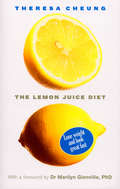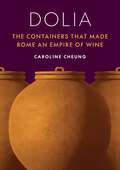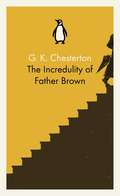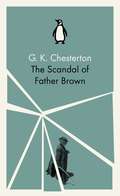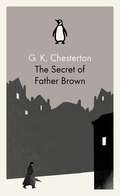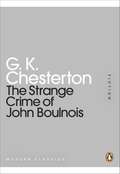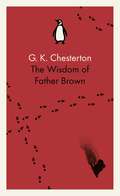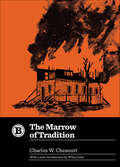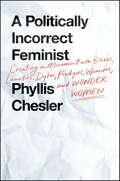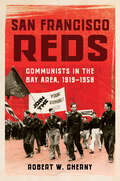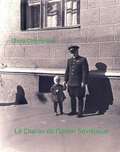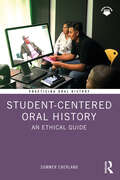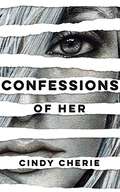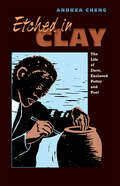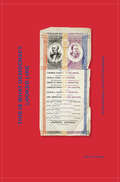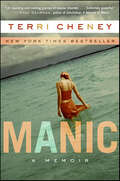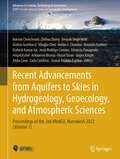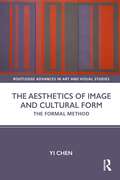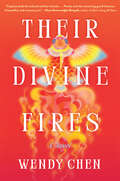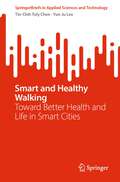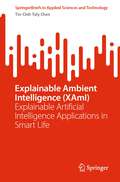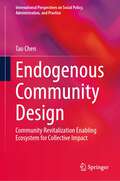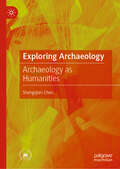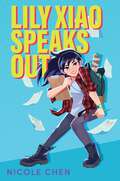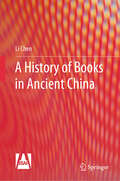- Table View
- List View
The Lemon Juice Diet: With a foreword by Dr Marilyn Glenville
by Theresa CheungLemon juice is the new cabbage soup of the diet world and a major Hollywood fad; the media is full of stories of stars losing weight on diets in which lemon juice is a key feature. The Lemon Juice Diet is a safe, delicious way to get thin quickly using this most magical and most fashionable of ingredients. Scientifically-proven to work and easy-to-follow, this diet will help you lose those excess pounds and stay in shape for good.So, what's the secret behind this diet? Lemon juice stimulates the flow of saliva and gastric juice and is an excellent digestive agent. And the health of your digestive system determines how well nutrients get absorbed from your food, how effectively toxins are filtered out and eliminated from your body and how quickly you lose weight.Lemon juice...- When taken regularly first thing in the morning, acts as a tonic to the liver and stimulates it to produce bile making it ready to digest the day's food- Helps lower blood sugar and can lower the glycemic impact of any meal- Is one of the richest and most concentrated food sources of vitamin C and recent research suggests that people who eat more fresh citrus are more likely to lose weight- Contains pectin power creating a satisfying feeling of fullness and preventing nagging hungerWith easy meal plans, eating guidelines and exercise tips, The Lemon Juice Diet will help you to lose weight safely and effortlessly; all you need to do is give life a squeeze.
Dolia: The Containers That Made Rome an Empire of Wine
by Caroline CheungThe story of the Roman Empire’s enormous wine industry told through the remarkable ceramic storage and shipping containers that made it possibleThe average resident of ancient Rome drank two-hundred-and-fifty liters of wine a year, almost a bottle a day, and the total annual volume of wine consumed in the imperial capital would have overflowed the Pantheon. But Rome was too densely developed and populated to produce its own food, let alone wine. How were the Romans able to get so much wine? The key was the dolium—the ancient world’s largest type of ceramic wine and food storage and shipping container, some of which could hold as much as two-thousand liters. In Dolia, classicist and archaeologist Caroline Cheung tells the story of these vessels—from their emergence and evolution to their major impact on trade and their eventual disappearance.Drawing on new archaeological discoveries and unpublished material, Dolia uncovers the industrial and technological developments, the wide variety of workers and skills, and the investments behind the Roman wine trade. As the trade expanded, potters developed new techniques to build large, standardized dolia for bulk fermentation, storage, and shipment. Dolia not only determined the quantity of wine produced but also influenced its quality, becoming the backbone of the trade. As dolia swept across the Mediterranean and brought wine from the far reaches of the empire to the capital’s doorstep, these vessels also drove economic growth—from rural vineyards and ceramic workshops to the wine shops of Rome.Placing these unique containers at the center of the story, Dolia is a groundbreaking account of the Roman Empire’s Mediterranean-wide wine industry.
The Incredulity of Father Brown (Father Brown Ser.)
by G K ChestertonThe third volume of stories featuring the cunning clerical sleuth Father Brown. Ahead of a new series of the popular BBC adaptation starring Mark Williams, all five of Chesterton's original Father Brown books have been republished with charming and collectible Penguin covers.'That sort of thing may be very well for crypts and cloisters and all sorts of moonshiny places. But ghosts can't get through a closed door in an American hotel.'Father Brown, the shrewd and modest clerical detective, encounters miracles, ghosts and prophets in this third volume of ingeniously plotted tales. From South America to New York, his keen observation and quiet wisdom are a match for any mystery - even when he finds himself missing, presumed dead, in his own coffin ...G. K. Chesterton was born in 1874. He attended the Slade School of Art, where he appears to have suffered a nervous breakdown, before turning his hand to journalism. A prolific writer throughout his life, his best- known books include The Napoleon of Notting Hill (1904), The Man Who Knew Too Much (1922), The Man Who Was Thursday (1908) and the Father Brown stories. Chesterton converted to Roman Catholicism in 1922 and died in 1938.'Chesterton knew how to make the most of a detective story' Jorge Luis Borges
The Scandal of Father Brown (Father Brown Ser. #5)
by G K Chesterton'It would not be fair to record the adventures of Father Brown, without admitting that he was once involved in a grave scandal...It happened in a picturesque Mexican road-house of rather loose repute...'After many years in the priesthood, Father Brown knows human nature and is not afraid of its dark side. In this fifth and final series of mysteries, the clerical mastermind confronts slander, passion, radical politics, superstition, high crimes and misdemeanours, outwitting some quite extraordinary and villainous adversaries on the way.G. K. Chesterton was born in 1874. He attended the Slade School of Art, where he appears to have suffered a nervous breakdown, before turning his hand to journalism. A prolific writer throughout his life, his best- known books include The Napoleon of Notting Hill (1904), The Man Who Knew Too Much (1922), The Man Who Was Thursday (1908) and the Father Brown stories. Chesterton converted to Roman Catholicism in 1922 and died in 1938.'Chesterton knew how to make the most of a detective story' Jorge Luis Borges
The Secret of Father Brown (Father Brown Ser. #4)
by G K ChestertonThe fourth collection of Father Brown stories featuring the ingenious amateur detective. Ahead of a new series of the popular BBC adaptation starring Mark Williams, all five of Chesterton's original Father Brown books have been republished with charming and collectible Penguin covers.'You see, I had murdered them all myself ... I had thought out exactly how a thing like that could be done, and in what style or state of mind a man could really do it. And when I was quite sure that I felt exactly like the murderer myself, of course I knew who he was.'Unassuming super-sleuth Father Brown has such brilliant powers of deduction that he knows more about crime than the criminals themselves. In this fourth volume of stories, the shabby priest unravels the most baffling conundrums involving, among others, a flying fish, a man with two beards and the Worst Crime in the World.G. K. Chesterton was born in 1874. He attended the Slade School of Art, where he appears to have suffered a nervous breakdown, before turning his hand to journalism. A prolific writer throughout his life, his best- known books include The Napoleon of Notting Hill (1904), The Man Who Knew Too Much (1922), The Man Who Was Thursday (1908) and the Father Brown stories. Chesterton converted to Roman Catholicism in 1922 and died in 1938.'Chesterton knew how to make the most of a detective story' Jorge Luis Borges
The Strange Crime of John Boulnois
by G K ChestertonThe colossus of crime leaned over to the little rustic priest with a sort of sudden interest.'You have heard of it?' he asked. 'Where have you heard of it?''Well, I mustn't tell you his name, of course,' said the little man simply. 'He was a penitent, you know. He had lived prosperously for about twenty years entirely on duplicate brown-paper parcels. And so, you see, when I began to suspect you, I thought of this poor chap's way of doing it at once.''Began to suspect me?' repeated the outlaw with increased intensity. 'Did you really have the gumption to suspect me just because I brought you up to this bare part of the heath?''No, no,' said Brown with an air of apology. 'You see, I suspected you when we first met. It's that little bulge up the sleeve where you people have the spiked bracelet.''How in Tartarus,' cried Flambeau, 'did you ever hear of the spiked bracelet?''Oh, one's little flock, you know!' said Father Brown, arching his eyebrows rather blankly. One of detective fiction's most idiosyncratic and best-loved characters, G. K. Chesterton's Father Brown is both a diminutive, genial clergyman and a master sleuth. In these two stories involving the ingenious, unobtrusive priest, a murdered man denounces his killer with his dying breaths, and a brilliant French inspector follows a trail of gentil carnage across London.This book includes The Strange Crime of John Boulnois and The Blue Cross.
The Wisdom of Father Brown (The\father Brown Stories Ser. #2)
by G K ChestertonThe second volume of stories featuring the most unlikely detective in literature - now the basis for a major BBC TV adaptation starring Mark Williams. The ingenious amateur detective Father Brown is put to the test again in this second collection of stories, which sees him solve cases featuring bandits, traitors, voodoo and murder, wrong-footing his opponents at every turn with his characteristic blend of mischievous humour and uncanny understanding of human foibles.G. K. Chesterton was born in 1874. He attended the Slade School of Art, where he appears to have suffered a nervous breakdown, before turning his hand to journalism. A prolific writer throughout his life, his best- known books include The Napoleon of Notting Hill (1904), The Man Who Knew Too Much (1922), The Man Who Was Thursday (1908) and the Father Brown stories. Chesterton converted to Roman Catholicism in 1922 and died in 1938.
The Marrow of Tradition: Large Print (Belt Revivals #0)
by Charles W. ChesnuttPart of Belt's Revivals Series and an undisputed classic of African American literature. With a new introduction by Wiley Cash ( When Ghosts Come Home ). On November 10, 1898, a mob of 400 people rampaged through the
A Politically Incorrect Feminist: Creating a Movement with Bitches, Lunatics, Dykes, Prodigies, Warriors, and Wonder Women
by Phyllis CheslerA powerful and revealing memoir about the pioneers of modern-day feminismPhyllis Chesler was a pioneer of Second Wave Feminism. Chesler and the women who came out swinging between 1972-1975 integrated the want ads, brought class action lawsuits on behalf of economic discrimination, opened rape crisis lines and shelters for battered women, held marches and sit-ins for abortion and equal rights, famously took over offices and buildings, and pioneered high profile Speak-outs. They began the first-ever national and international public conversations about birth control and abortion, sexual harassment, violence against women, female orgasm, and a woman’s right to kill in self-defense. Now, Chesler has juicy stories to tell. The feminist movement has changed over the years, but Chesler knew some of its first pioneers, including Gloria Steinem, Kate Millett, Flo Kennedy, and Andrea Dworkin. These women were fierce forces of nature, smoldering figures of sin and soul, rock stars and action heroes in real life. Some had been viewed as whores, witches, and madwomen, but were changing the world and becoming major players in history. In A Politically Incorrect Feminist, Chesler gets chatty while introducing the reader to some of feminism's major players and world-changers.
San Francisco Reds: Communists in the Bay Area, 1919-1958
by Robert W. ChernyFounded in 1919, the Communist Party (CP) in San Francisco survived an ineffectual early period to become a force in the trade union heyday of the 1930s. Robert Cherny uses the lives and careers of more than fifty members to tell the story of the city’s CP from its founding through 1958. Cherny draws on FBI files, the records of the CP at the Russian State Archive for Social and Political History, interviews, and memoirs to follow male and female party and union leaders, rank-and-file members, and others. His history reveals why people joined the CP while charting the frequent changes in policy, constant member turnover, and disruptive factionalism that limited party aims and successes. Cherny also follows his subjects through their resignations, expulsions, or other reasons for departure and looks at the CP’s influence on their lives in subsequent years. Vivid and exhaustively researched, San Francisco Reds is a long view account of the personal motivations and activism of an Old Left generation in a West Coast city.
Le Charon de l'Union Soviétique
by Elena ChernikovaLe texte raconte l'histoire du grand-père de l'auteur, un homme ayant vécu des moments clés de l'histoire russe, y compris la chute de l'Union soviétique. Après la mort de sa femme, il décide de profiter pleinement de la vie, oubliant la mort et se concentrant sur des expériences positives, comme un rendez-vous chez le coiffeur. Le récit explore les changements sociaux et personnels à travers les yeux de cet homme ayant traversé de nombreuses épreuves et transformations.
Student-Centered Oral History: An Ethical Guide (Practicing Oral History)
by Summer CherlandStudent-Centered Oral History explores the overlaps of culturally relevant teaching, student-centered teaching, and oral history to demonstrate how this method empowers students, especially those from historically underrepresented communities. With tangible tools like lesson plans and reflection sheets, available to download as eResources from the book's website, each interactive chapter is applicable to classrooms and age groups across the globe. Educators from all levels of experience will benefit from step-by-step guides and lesson plans, all organized around guiding questions. These lessons coach students and educators from start to finish through a student-centered oral history. Background research, historical context, cultivating a culture of consent, analysis, promotion, and gratitude are among the many lessons taught beyond writing questions and interviewing. With a specific focus on the ethics influencing a teacher’s role as guide and grader of a student-centered oral history, this book also highlights successful approaches across the world of students and teachers discovering oral history. These examples reveal how student-centered oral history empowers academic achievement, radicalizes knowledge, develops relationships, and promotes community engagement. This book is a useful tool for any students and scholars interested in oral history in an educational setting.
Confessions of Her
by Cindy CherieConfessions of Her is a tale of survival depicting how one young woman found love in herself, rather than searching for it in the arms of another. This autobiographical collection of poetry and prose takes the reader on a journey of love and loss, depicting how she overcame heartbreak to ultimately, save herself.Fans of Confessions of Her are saying "beautiful words from a beautiful woman", "emotionally charged" and "goosebumps for all!"
Etched in Clay: The Life of Dave, Enslaved Potter and Poet
by James ChengThe acclaimed biography-in-verse about the life and times of Dave, an enslaved potter who inscribed his works with short poems during the years leading up to the Civil War.Sometime before 1818, an enslaved young man named Dave was brought to Edgefield, in the heart of South Carolina's pottery-producing area. From the time he was first taught to turn a potter's wheel, Dave showed exceptional natural talent. Soon he was creating pieces of great beauty and often massive size. He also learned to read and write, even though South Carolina had laws prohibiting slave literacy. And then Dave did something even more daring: he began to sign his jars and carve many of them with sayings and short poems that reflected his daily life and experiences. With these courageous acts, Dave quietly protested the brutality of slavery and asserted his humanity. Here is an evocative portrait of Dave as memorable as one of his jars. Through simple yet powerful poetry, including some of Dave's inscriptions, we learn his extraordinary story of perseverance, creative inspiration, and hope. Today Dave's legacy lives on in the artistry of his pottery, in his intriguing words, and as a reminder of the dignity and resilience of the human spirit.
This is What Democracy Looked Like: A Visual History of the Printed Ballot
by Alicia Yin ChengThis Is What Democracy Looked Like, the first illustrated history of printed ballot design, illuminates the noble but often flawed process at the heart of our democracy. An exploration and celebration of US ballots from the nineteenth and early twentieth centuries, this visual history reveals unregulated, outlandish, and, at times, absurd designs that reflect the explosive growth and changing face of the voting public. The ballots offer insight into a pivotal time in American history—a period of tectonic shifts in the electoral system—fraught with electoral fraud, disenfranchisement, scams, and skullduggery, as parties printed their own tickets and voters risked their lives going to the polls.
Manic: A Memoir
by Terri CheneyAn attractive, highly successful Beverly Hills entertainment lawyer, Terri Cheney had been battling debilitating bipolar disorder for the better part of her life—and concealing a pharmacy’s worth of prescription drugs meant to stabilize her moods and make her "normal." In explosive bursts of prose that mirror the devastating mania and extreme despair of her illness, Cheney describes her roller-coaster existence with shocking honesty, giving brilliant voice to the previously unarticulated madness she endured. Brave, electrifying, poignant, and disturbing, Manic does not simply explain bipolar disorder—it takes us into its grasp and does not let go.
Recent Advancements from Aquifers to Skies in Hydrogeology, Geoecology, and Atmospheric Sciences: Proceedings of the 2nd MedGU, Marrakesh 2022 (Volume 1) (Advances in Science, Technology & Innovation)
by Haroun Chenchouni Zhihua Zhang Deepak Singh Bisht Matteo Gentilucci Mingjie Chen Helder I. Chaminé Maurizio Barbieri Mahesh Kumar Jat Jesús Rodrigo-Comino Dionysia Panagoulia Amjad Kallel Arkoprovo Biswas Veysel Turan Jasper Knight Attila Çiner Carla Candeias Zeynal Abiddin ErgülerThis book is based on the accepted papers for presentation at the 2nd MedGU Annual Meeting, Marrakesh 2022. It presents a series of newest research studies that are nowadays relevant mainly to Middle East, Mediterranean region, and Africa. It includes major subjects related to hydrology, hydrogeology, hydrogeochemistry including, but not limited to, isotope hydrology, groundwater models, water resources and systems, and related subjects. It also includes research studies on biogeochemistry which mainly focus on the interactions between life and the chemical cycles in the Earth system. Some case studies on geobiology and geoecology investigate the structure and function of geoecosystems, their components, and their environment. The book also presents major subjects related to atmospheric, oceanic, meteorology and climatic science with recent developments in the field. By cutting across these traditional subject boundaries, this book brings together the major elements that are important for understanding the weather, climate, water systems, and geoecosystems in these regions.
The Aesthetics of Image and Cultural Form: The Formal Method (Routledge Advances in Art and Visual Studies)
by Yi ChenOffering an alternative mode of visual cultural analysis to the prevalent discursive model, this book proposes to situate analysis of Image within ‘formal’ analyses of culture experience.Specifically, the discussion draws on theories of affective aesthetics with the view of addressing the sensual form of culture (i.e. ‘cultural form’). Therefore, the volume puts forward a mode of formalist analysis in visual cultural research which takes purchase on the idea of ‘cultural form’. A continuum of formalist attention between Image analysis (visual media, industrial design) and probing of ‘cultural forms’ establishes the theoretical underpinning of the book. These concepts are expounded through a case study which looks at formal experimentations and debates arising from 1960s avant-garde artistic practices in London.
Their Divine Fires: A Novel
by Wendy ChenA captivating and intimate debut novel interwoven with folktale and myth, Wendy Chen&’s Their Divine Fires tells the story of the love affairs of three generations of Chinese women across one hundred years of revolutions both political and personal. In 1917, at the dawn of the Chinese revolution, Yunhong is growing up in the southern china countryside and falls deeply in love with the son of a wealthy landlord despite her brother&’s objections. On the night of her wedding, her brother destroys the marriage, irrevocably changing the shape of Yunhong&’s family to come: her daughter, Yuexin, will never know her father. Haunted by a history that she does not understand, Yuexin passes on those memories to her daughters Hongxing and Yonghong, who come of age in the years following Mao&’s death, battling the push and pull of political forces as they forge their own paths. Each generation guards its secrets, leaving Emily, great-granddaughter of Yunhong and living in contemporary America, to piece together what actually happened between her mother and her aunt, and the weight of their shared ancestry. Drawing on the lives of her great-grandmother and her great-uncles—both of whom fought on the side of the Communists—as well as her mother&’s experiences during the Cultural Revolution, Wendy Chen infuses this gorgeous debut with a passion that will transport the reader back to powerful moments in history while bringing us close to the women who persisted despite the forces all around them. Both brilliant and haunting, it&’s a story about what our ancestors will, and won&’t, tell us.
Smart and Healthy Walking: Toward Better Health and Life in Smart Cities (SpringerBriefs in Applied Sciences and Technology)
by Tin-Chih Toly Chen Yun-Ju LeeThis book examines smart technologies and their invaluable role in augmenting the walking experience of mobile users. From meticulously planned walking routes to precise footprint detection and analysis, as well as cutting-edge fall detection and prevention mechanisms, these intelligent technologies have the potential to revolutionize healthy and smart walking. Against the backdrop of the post-COVID-19 era, where unrestricted mobility has become pivotal for restoring normalcy, the demand for smart healthcare solutions has soared. The book explores latest advances in sensor technology, cloud computing, deep learning, and networking and related innovative applications that can leverage smart technologies to enhance healthy walking.
Explainable Ambient Intelligence: Explainable Artificial Intelligence Applications in Smart Life (SpringerBriefs in Applied Sciences and Technology)
by Tin-Chih Toly ChenThis book systematically reviews the progress of Explainable Ambient Intelligence (XAmI) and introduces its methods, tools, and applications. Ambient intelligence (AmI) is a vision in which an environment supports the people inhabiting it in an unobtrusive, interconnected, adaptable, dynamic, embedded, and intelligent way. So far, artificial intelligence (AI) technologies have been widely applied in AmI. However, some advanced AI methods are not easy to understand or communicate, especially for users with insufficient background knowledge of AI, which undoubtedly limits the practicability of these methods. To address this issue, explainable AI (XAI) has been considered a viable strategy. Although XAI technologies and tools applied in other fields can also be applied to explain AI technology applications in AmI, users should be the main body in the application of AmI, which is slightly different from the application of AI technologies in other fields. This book containsreal case studies of the application of XAml and is a valuable resource for students and researchers.
Endogenous Community Design: Community Revitalization Enabling Ecosystem for Collective Impact (International Perspectives on Social Policy, Administration, and Practice)
by Tao ChenThis book is a comprehensive exploration of endogenous community building, aiming to investigate how to create a vibrant, service-integrated, and sustainable community through collective impact approaches. It’s a guide to social innovation that combines theory and practical application. In terms of theory, it constructs concepts such as endogenous community, endogenous design system, life project platform and enabling ecosystem. In practice, it offers design methods and a toolkit for collective impact to enhance community resilience and capacity through service co-creation. This book provides readers with a systematic guide to endogenous community design, ranging from conceptual understanding and theoretical models to practical methodologies. Its aim is to build a sociotechnical system from the bottom-up to address complex issues.This book is ideal for community leaders, government officials, NGOs, urban planners, social innovators, and anyone passionate about sustainable community development.
Exploring Archaeology: Archaeology as Humanities
by Shengqian ChenThis book looks inward to reveal and analyse problems in archaeology itself. The subject explored in this volume include: humanistic attributes of archaeology, various archaeological theory, challenges in the development of archaeology, China Archaeology paradigms and "Chinese School", responsibilities and status of archaeology in society, and prospects of Archaeology in China. With years of engagement in philosophy and theory studies, the author raised many bold questions and contributed unique and original views. While the archaeological circle remained tacit about -"Chinese School"- a term proposed by leading authority Professor Su Bingqi, the author bravely voiced that archaeology needs a "Chinese school". The "Chinese school" would facilitate both the reconstruction of cultural significance and the vying for international discourse power. The author also puts forward his thoughts on the current public archaeological fever, explaining and reflecting on the social responsibility, discourse power and how to present the archaeological discovery in a more accurate and efficient way to the public.
Lily Xiao Speaks Out
by Nicole ChenFrom the author of It's Boba Time for Pearl Li! comes an empowering, heartfelt middle grade novel about a grunge-loving Taiwanese American tween who must use her voice to fight for ESL support at her school.Lily Xiao can’t wait to go to Camp Rock Out this summer, where she’ll finally be able to shed her “class robot” good girl reputation and start her journey to becoming the next Eddie Vedder! And she can’t wait to do it with her best friend and cousin, Vivian, who’s just moved from Taiwan to Lily’s California hometown. But as the two cousins work their way through seventh grade, Vivian struggles more and more with her schoolwork, which is all taught in English. If Vivian can’t get her grades up, her parents won’t let her go to rock camp.Determined to help, Lily embarks on a mission to push their school to provide more support for English-as-a-Second-Language learners like Vivian. But her first-generation immigrant family is nervous about Lily challenging the status quo. We should be grateful to be here, they always say.With Camp Rock Out on the line, Lily will need to decide how far she’ll push against her family’s wishes in order to stand up and speak out.
A History of Books in Ancient China
by Li ChenThis book presents a study of the history of ancient Chinese books, not only highlighting specific aspects of the ontology of book history, such as printing and publishing, but also analyzing the internal and external causes of the development of book undertakings from a macro-perspective. Placing the development of and changes in the history of books in the context of social development, it investigates its interaction with politics, economy, society, education, and religion, especially with the big culture, and constructs a book-centered history of ancient Chinese culture.
